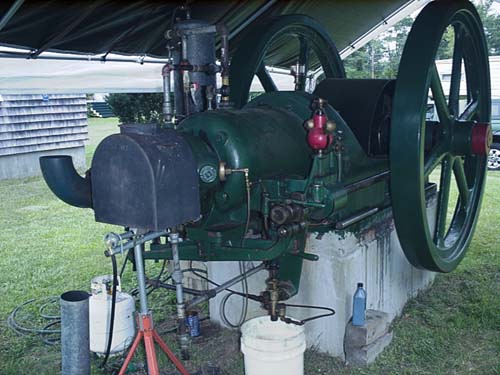It was bought by the privately-held Jamestown Water Company to drive a three-cylinder Gould pump which provided water pressure for all of the water company’s customers. The Davenport family, who I believe were summer residents at that time, built the water system both out of necessity and as an investment. The Davenports may have chosen the De La Vergne engine because of their familiarity with the one at Beavertail lighthouse used for compressing air to blow the Beavertail fog horn.
Mr. Alan Davenport was an old friend of mine and, when the water company retired the De La Vergne engine, he offered it to me for the museum. I was interested in it mostly because Marconi had used two such engines to power his historic Cape Cod wireless station, which made history by sending the first wireless message across the Atlantic from President Theodore Roosevelt to King Edward VII of England in 1903.
Dick Hanson, Victor Richardson, Paul Merriam and I reigged the engine out of the pumping station and brought it to the museum, but first we carefully built a strong framework for the flywheels and the crankshaft to guard against bending.
Later, when the museum acquired the Massie Wireless Station (which is the oldest surviving such structure), it seemed appropriate to install the De La Vergne next to it. Harold Foster urged and undertook this job several years ago, and the Thursday Group (Mal Long, Warren Hagist, Lou Vertefeuille, Fred Jaggi, Leigh Atwood, Bob Phillips, Tom Patterson and Harold Foster) have restored the engine to running condition in the year 2000.
De La Vergne bought the manufacturing rights in the United States from the British Hornsby-Akroyd Company. This type of engine was originally developed by Mr. Akroyd Stuart in England.
